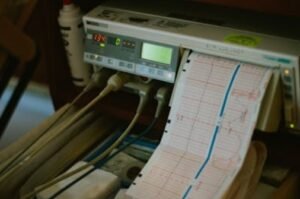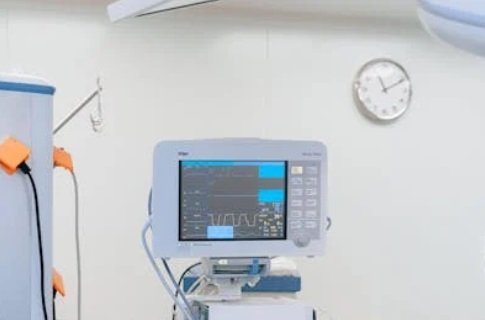In the process of medical saving, it is crucial to give priority for the stability of the power sources of the medical instruments. It provides assurance of efficiency, accuracy, and reliability in these devices. Continuous electric supply eliminates the probability of give throw away results that might bring about adverse effects on the health and wellbeing of patients.
Role of the topic in medical context
The world of medicine has millions of important subjects that remain significant in the field of progression. Each factor maximally contributes to the development of new substances, improved diagnostic tools, new approaches to operations, etc. In other words, all these aspects determine enhancements in the medical research technology and improvements in patient care such as availability of a stable power-related supply for equipment.
Understanding the Basics
In basic terms a power supply can be defined as a system that provides electrical power to equipment in a given circuit.
A power supply is a Hardware component that is charged with the responsibility of supplying electrical energy to other items of a computer hardware. The basic function of it is to rectify the AC power provided by wall sockets into DC power that is utilized by various components used in a computer.
He illustrated how the power supply is important in medical equipment and other products.
The voltage and current in medical equipment are regulated by the power supply so that appropriate current flows to the equipment. This is important for accuracy, guaranteeing a steady operation that is not disrupted – vital for both assessment of physical condition and swift delivery of important doses.
Here one can discuss the importance of having a proper power supply for medical equipment. Because it is such critical equipment it needs to have a proper power supply that will meet its high demand.
On the following points, the paper outlines how a power supply affects the functioning of medical devices:
The power supply plays a crucial role in medical devices, more to ultimate functionality and sometimes less. A healthy continuous stream is more accurate in readings, and therefore more accurate in diagnosis. Variations in supply will mean changes in dosage with expensive health implications to patients as it may mean administering wrong treatment.
Materials and methods of medical equipment, fully dependent on stable power supplies
There are many critical medical tools which require reliable power supply, these include; ventilators, dialysis machines, and heart monitors. These real life case scenarios demonstrate the critical dependency of multiple essential healthcare life support operations and patient treatment services on continued availability of power.
Ensuring that power supply in the medical equipment is reliable is a crucial step towards implementing effective systems in the medical practice.
A reliable power supply is one that is not easily affected by common causal factors and can perform its functions with minimal inputs of human interference.
It has steady power output, no intermittent, has provisions against short-cigcuitage and overheating, should have adequate power rating commensurate with the power needs of the systems installed, should be well made and should have backup measures in case of failure such as short- circuit cut-off.
Parameter affecting the reliability of power supply
Stability and dependability of current supply is in different ways defined by numerous criteria. General physical conditions, practices of asset management and protection, contingency planning, smart technologies including smart grids, and distributional diversification are some of the factors that influence the reliability and quality of power supplied to the consumer. One cannot underestimate the government’s policies as a major factor that has a great influence on such processes.
Evaluating on life cycle and sustainability of a stable electricity supply
Power supply lifespan and reliability can be determined by measuring its performance under different environmental conditions or testing the quality of the individual components or the production processes of manufacturing a reliable long-lasting power supply. This makes certain electrical delivery reliability, reduces embarrassing power failure occurrences and enhances total power system device endurance.
Advantage of having back ups in power supplies for the medical equipments
The main reason consists in the high reliability of power supplies of medical equipment that ensures uninterrupted operating conditions and critical risks during operations. They bolster diagnostics precision, therapeutic interventions impact, and keep patients’ safety and comfort levels optimal. Inaccurate mixture or ignition can moreover result in failed experiments due to unreliable power.
While it should be acknowledged that this type of power supply has its disadvantages, known safety advantages include:
This paper aims at analyzing the role of power supply as a safety precaution ensuring the safe use of medical equipment.
This is true since the power supply is a fundamental component, which is important in the safety of the medical equipment. It ensures proper operational functions are in place; it avoids breakage of the device – a step that caters for the health of not only the patient but also the staff involved. For example, in the case of failure of power, there are possible risks with dangerous impacts on the health of the population, and possible legal responsibility.
Physical access and understanding of safety concerns on power supplies in medical equipment
Safe design and standards implemented in the power supplies used in Medical equipment is essential in its operation to avoid any mishaps. Such standards encompass applications with guidelines for shields with safety measures particularly pertaining to electrical safety and electromagnetic compatibility in sensitive environments such as healthcare.
Other challenges acknowledged in regard to unstable power supplies
This, in turn, exposes the operation to possible challenges, including loss of data and equipment, disruptively delayed proceedings. In the sectors such as healthcare or emergency services it becomes a safety concern, which can result in severe life threatening circumstances with unstable electricity access .
The following part provides more information on how power supplies can increase the safety of the equipment.
Power supplies make equipment safer by supporting a well-regulated voltage and current output. They protect the equipment from damages due to power surges or dropping below the required voltage or allow equipment to perform within their design parameters and prolong their operational life span and minimize the chances of a catastrophic failure during operation.
The important features to be met while designing Power supply for Medical Equipment:
Energy-efficiency
Energy-efficiency therefore entails using minimum energy in rendering services to the clients while maintaining the quality and standards of such services. It is extremely useful and effective in fulfilling goals regarding sustainability, optimizing cost indexes, and reducing negative effects on the environment by efficiently dampening over-dependence on fossil fuels for functioning.
Regulatory compliances
Legal regulations are an important set of rules organizations have to adhere to so as to meet certain industry benchmarks or requirements. They make certain that organizations act responsibly, avoid fines, protect consumers and uphold clear and integrity’s to strengthen confidence in organizations’ operations and products besides reducing frauds.
Built-in protective measures
Implicit safeguard measures terminate here refer to the security measures that have been installed in the systems which are able to prevent possible harm on their own. This could encompass safety measures in automobiles, Anti-virus software in computers or security measures within a network operation in processing data.
Technologies Applied in Power Supply That Make It More Reliability and Safe Today
As societies develop new technologies, power supply reliability and safety are rising to unprecedented heights. Steady operational smart grids, AI algorithms ensure usage optimisation, and renewable sources lower conventional fuel dependence. Ahead meters differentiate and recognize the contrary promptly, and mutually avert outages overcoming safety level enhancements in danger.

Critical medical equipment depends on electric power supply whereby a steady, reliable energy source is of paramount importance. As a fundamental aspect of healthcare facilities, this embraces a variety of gadgets ranging from simple to complex, which are components of everyday working such as hospital lighting, lifts, among others, as well as life-sustaining equipment which is actively involved in the treatment of patients. Medical equipment power supplies require not only efficiency and reliability but also safety and greater robustness than typical industrial applications. They should also transform certain characteristics like low noise, high efficiency and effective thermal management systems due to the sensitivity of the environment they operate in. Doing so makes it easier to know about the great performance even when facing other risks related to technical breakdowns or even electrical problems in medical rescue equipment usage.
I – some examples of technologies which can help in increasing power supply reliability and safety
Sophisticated technologies like Smart Grids for power distribution, sophisticated maintenance software for equipment, or FDS for identifying early system faults increase the reliability and safety of the supplied power. Another pertinence of digitization of the grid is that it can simulate the grid for use in problem-solving before the problems tough on the actual grid system.
